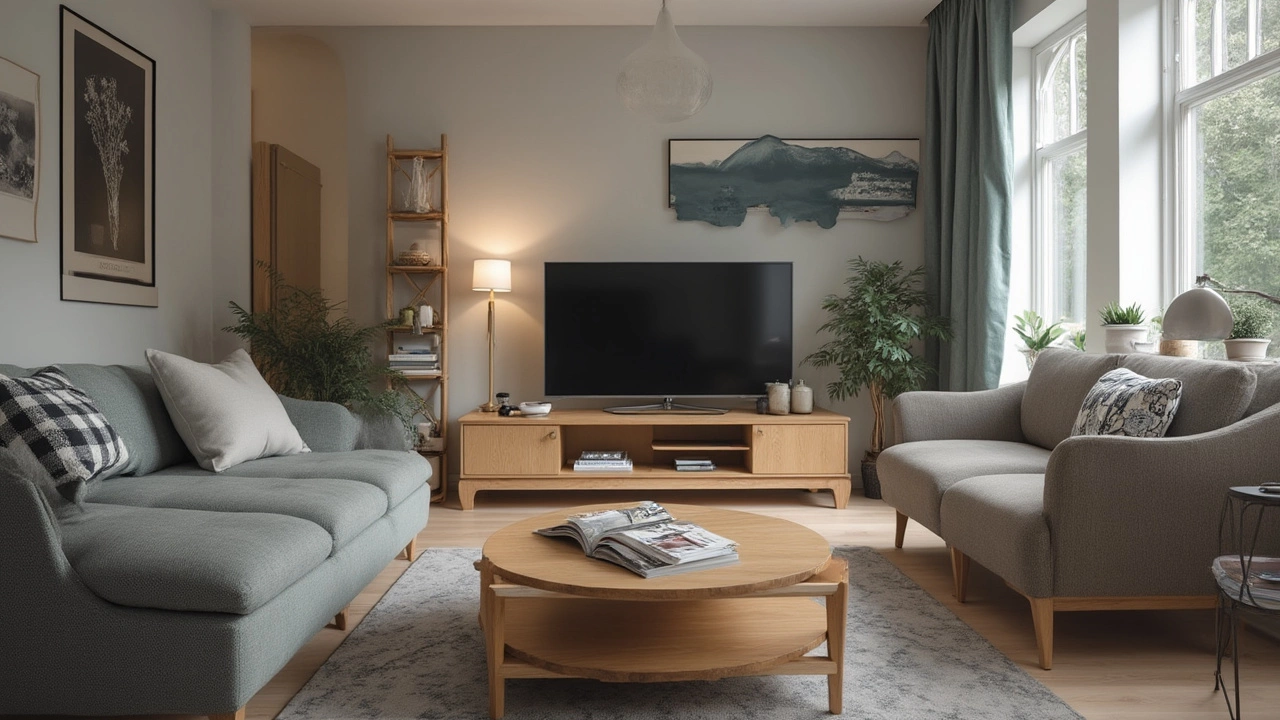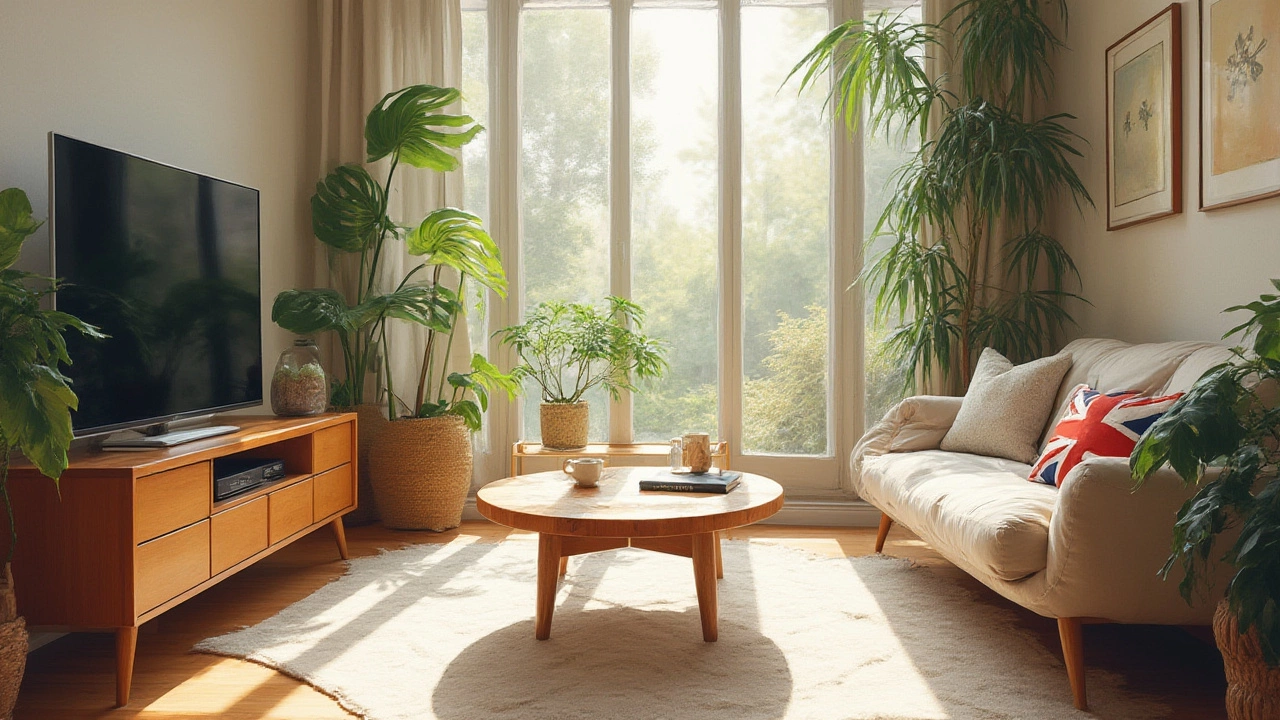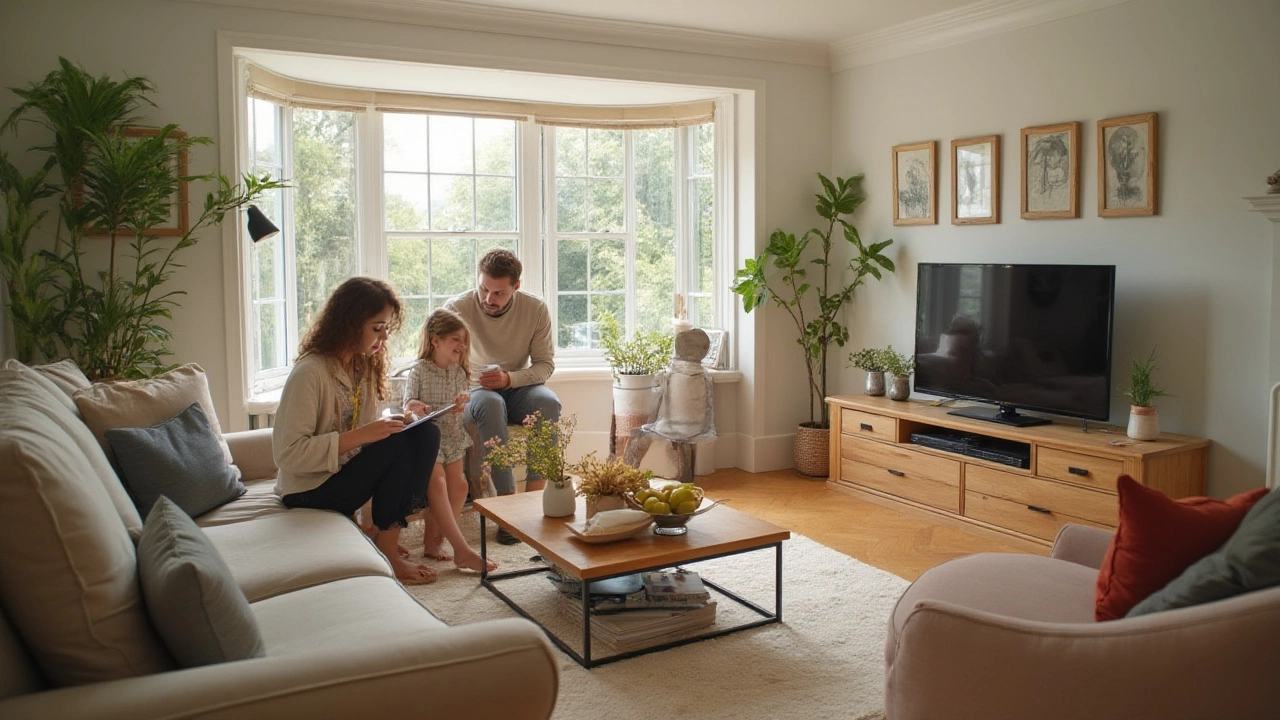You may not think about it until you’re fluffing the couch pillows and suddenly something feels off. Maybe you’ve just heaved a perfect oak coffee table into your living room, only to realize it’s towering over your TV stand, or maybe both pieces squat so low they’re lost beneath the sofa cushions. There’s a sweet spot for furniture heights, and it’s not just about looks—comfort, mechanics, and even how you move around the room all hang in the balance. The right setup keeps your movie nights effortless and your living room looking like you’ve actually read up on interior design (without needing a degree or endless Instagram scrolling). So does your coffee table need to match the height of your TV stand? The answer isn’t as simple as you might think.
How Heights Affect Comfort and Visual Balance
Most folks pick out a coffee table and TV stand based on style or price, but ignore the next-level basics, like height. Here’s a shocker: standard coffee tables hover around 16 to 18 inches, while the average TV stand clocks in at 20 to 30 inches. That’s a chunk of difference. Why? Each piece does a different job. A coffee table is there for snacks, books, feet (if you’re honest), or even board games on rainy days. Meanwhile, a TV stand has to put your screen at eye level, based on the height of your sofa. Research by the American Home Furnishings Alliance notes that eye-level for most seated adults is 42 inches, so you’ll want your TV centered around this mark. That often means your stand needs a bit more height than the coffee table.
But why does this even matter visually? If your table and stand are exactly the same height, the space can look a bit off-balance. Your eyes have no clear focal point. Mixing heights—with the TV stand a little taller—actually creates natural flow in the room and directs attention to your screen, which is usually the star anyway. The most popular design advice recommends keeping your coffee table level with or up to two inches shorter than your couch seat. As for the TV stand, set it so the TV’s center meets you eye to eyeball when you’re kicked back watching Netflix.
While there’s no official rule that shouts "never match heights ever," playing around with those differences gives the room a layered, thoughtful look. Think about walking into a room where all the furniture is the same height—it’s flat, uninteresting, and oddly corporate, like a waiting room. You want your living room to feel lived in, not like an office where personal style comes to die.

Choosing Functional Heights: When Does Matching Make Sense?
Okay, maybe you’re a symmetry lover. Is there ever a reason to match a coffee table and TV stand height on purpose? Sometimes! Open-plan spaces, lofts, or even small apartments might benefit from this trick. When you’re dealing with limited square footage, lining up heights can help tie furniture together, especially if you double your coffee table as extra bench seating or as a media console. This hack works best when both pieces are sleek, modern, and have clean lines—think Scandi minimalist or Japanese-inspired setups.
Still, most designers warn that matching should be a choice, not an accident. The reality is most people are happier when the coffee table is a notch lower—the 16-18 inch sweet spot lets you grab snacks or set down a cup of coffee without getting up, and you’re less likely to block your view of the TV. By contrast, a TV stand close to 24 inches (depending on your sofa height) keeps the TV comfortable for hours-long binge sessions.
Don’t forget functionality. Got kids who like crawling around? A lower coffee table can be safer and easier for everyone. Prefer snacking at your coffee table while watching your show? Measure so the tabletop lines up with your knees or just below, allowing easy reach and zero spilled chips. Many people are surprised to learn how much difference an inch makes—try stacking books or trays on your coffee table to test out varying heights before you commit to buying.
Maybe you love to rearrange your living room every season. Modular coffee tables, with adjustable heights or nesting features, let you experiment until you find a combo that works. There’s a reason why adjustable furniture saw a 20% spike in sales last year—a lot of us are craving that flexibility, especially as gaming, working, eating, and relaxing all happen in the same living room now.

Tips and Real-Life Setups for Your Home
Let’s say you’re ready to make it work (or totally rethink your last furniture buy). Here’s how to nail the height mix without driving yourself nuts:
- coffee table height should match or be up to two inches lower than your couch seat. Standard couch seats range from 17 to 19 inches high—grab a tape measure and check yours.
- If your TV stand is also doubling up as a storage unit, make sure opening drawers won’t bump into your coffee table. Leave at least 16 inches between them for comfy circulation.
- If you sit low on a sectional or deep-cushion couch, consider a slightly taller coffee table for easier reach. But avoid going higher than the seat—it gets awkward fast.
- Love to entertain? Choose a larger, lower coffee table for board games, platters, or casual gatherings around the screen. Go for rounded edges—they save shins.
- If your living room has a fireplace or lots of windows, make sure your TV and table heights aren’t blocking sightlines. Lower tables create a breezier, open vibe.
- Don’t ignore color and texture. Even if your heights differ, matching materials or finishes (like oak wood grain or black lacquer) ties the space together.
- Designer trick: Try a two-tone setup. Contrasting a white TV stand with a dark wood coffee table breaks up too much monotony and hides small height differences.
- If you love DIY, stack coffee table books or use a decorative tray to “fake” extra inches and adjust until it feels right in the space. There’s no shame in hacking your way to a better look.
- Keep the view in mind—if you live in a small apartment or studio, go for lower, lighter tables so the area doesn’t look crowded. Glass tables almost disappear into the room, making everything feel more open.
The truth? Style and function both matter. Famous surveys by Apartment Therapy and Houzz users show the happiest folks are the ones who focus more on practical comfort than on following any so-called rules. If you’re always bumping your knees, dropping remotes, or squinting up at the TV, something’s off. Grab a notepad, list what matters (movie nights, big trays of snacks, wild toddlers, minimalism?), and plan accordingly. Take five minutes to sketch your room layout—it doesn’t need to be fancy. Count how many inches from seat to coffee table surface, then from seat to eye level where your TV screen lands. Jot down how much unused space you want in between so people can weave in and out without feeling trapped. Suddenly, you’ve got a formula that works better than just copying Pinterest photos.
If you want some final inspiration, look up famous designers like Nate Berkus or Joanna Gaines. They rarely match coffee table and TV stand heights in the same room—instead, they balance proportions by mixing surface levels, using rugs to tie things together, and adding plush seating. Join the thousands of people who’ve ditched the "matchy-matchy" approach for something bolder and more personal. Your home should work for you, not for some invisible trend police. When you focus on coffee table height and TV stand placement that feels good (and looks good), your living room becomes a place you actually want to be. No more awkward movie nights, and no more second-guessing every new furniture purchase. That’s a win for everyone.


Write a comment